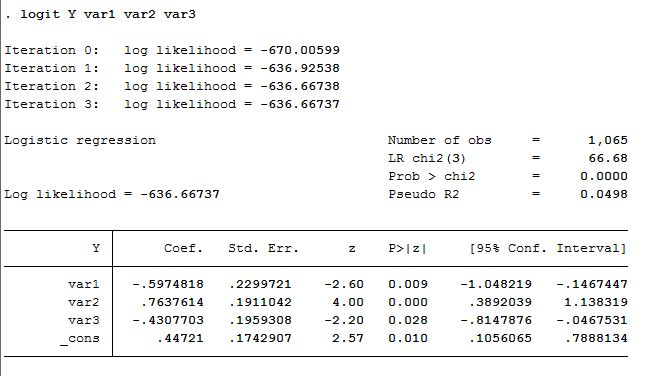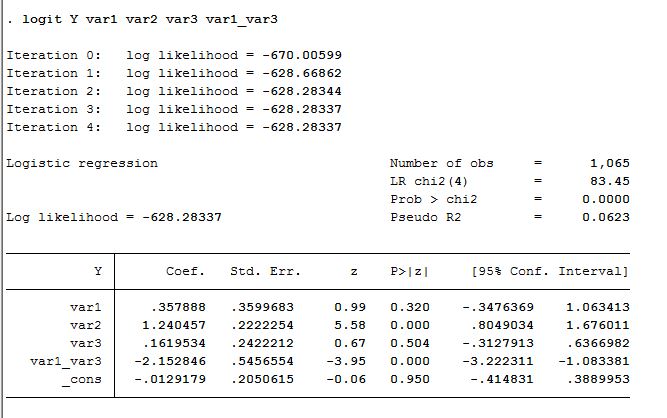I have a logistic regression model: logit(Y)= b0+b1+b2+b3. All my variables are dummy variables.
I want to add the interaction term to the model: logit(Y)= b0+b1+b2+b3+b1*b3. Please, find the model with interaction term below. I would like to know how the interpretation of the variables var1, var2, and var3 changes when the interaction term is added to the model. For instance, is the coefficient of var2 1.24, when var1=0 and var3=0. What is the reference category for the interaction term? Is it var1=0, var2=0, var3=0? Is the constant when var1=0, var2=0, var3=0?


